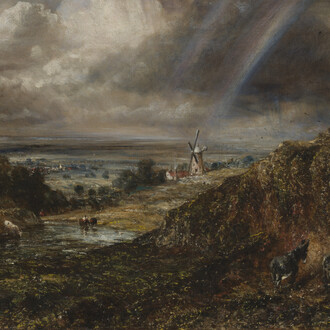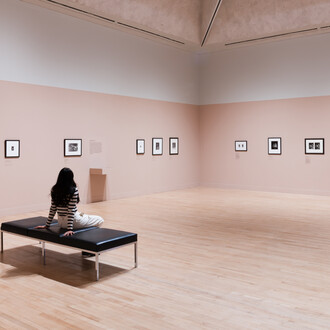The radical square oil paintings exhibited by JMW Turner (1775 – 1851) will be displayed together for the first time ever in The EY Exhibition: Late Turner – Painting Set Free. This major exhibition will be the first major survey of the artist’s achievements during his final period (1835-50), opening at Tate Britain in September this year.
The nine finished paintings are being shown in a dedicated room of the exhibition which brings new perspectives on Turner’s work during the final period of his life. At the time of their creation Turner’s square canvases were his most controversial and they were famously subjected to a hail of abuse in the press. Even Ruskin, a devoted fan, described Turner’s work by 1846 as ‘indicative of mental disease.’ The show will reposition Turner in his old age as a challenging and daring artist who continued his lifelong engagement with the changing world around him right up until his death in 1851.
When Turner began painting on square canvases in the later years of his life between 1840 and 1846 they were a new format for the artist to be working in. In works known as Shade and Darkness and Light and Colour, both exhibited 1843, it can be seen how Turner developed his dramatic use of the vortex, a technique characteristic in his later work.
The display of the square canvases, along with one unfinished square composition, has been made possible by the important loans of Glaucus and Scylla 1841 (Kimbell Art Museum, Fort Worth, USA), and Dawn of Christianity 1841 (Ulster Museum, Belfast, UK). The group of works includes some of Turner’s most iconic pairings such as Peace and War, both exhibited 1842 (Tate). The exhibition as a whole will also include a number of pairings from throughout this period of his life, showing Turner’s fondness for working in sets or sequences in his old age.
Sam Smiles, Professor of Art History and Visual Culture, Exeter University, and co-curator of The EY Exhibition: Late Turner – Painting Set Free, said: ‘We are delighted to be able to bring JMW Turner’s finished square canvases together in a single room for the very first time, almost like a show within a show. What Turner does in these paintings is unique, exploiting shape and format to a particular end. Exhibiting shaped canvases was a new departure for the artist, and they show us that he continued to innovate even in his final years. The world around Turner was changing and he was changing with it.’
The EY Exhibition: Late Turner – Painting Set Free is curated by Sam Smiles, Professor of Art History and Visual Culture, Exeter University and David Blayney Brown, Manton Curator of British Art 1790–1850, Tate Britain with Amy Concannon, Assistant Curator 1790–1850, Tate Britain. The exhibition will be accompanied by a fully illustrated catalogue from Tate Publishing and a programme of talks and events in the gallery.



















